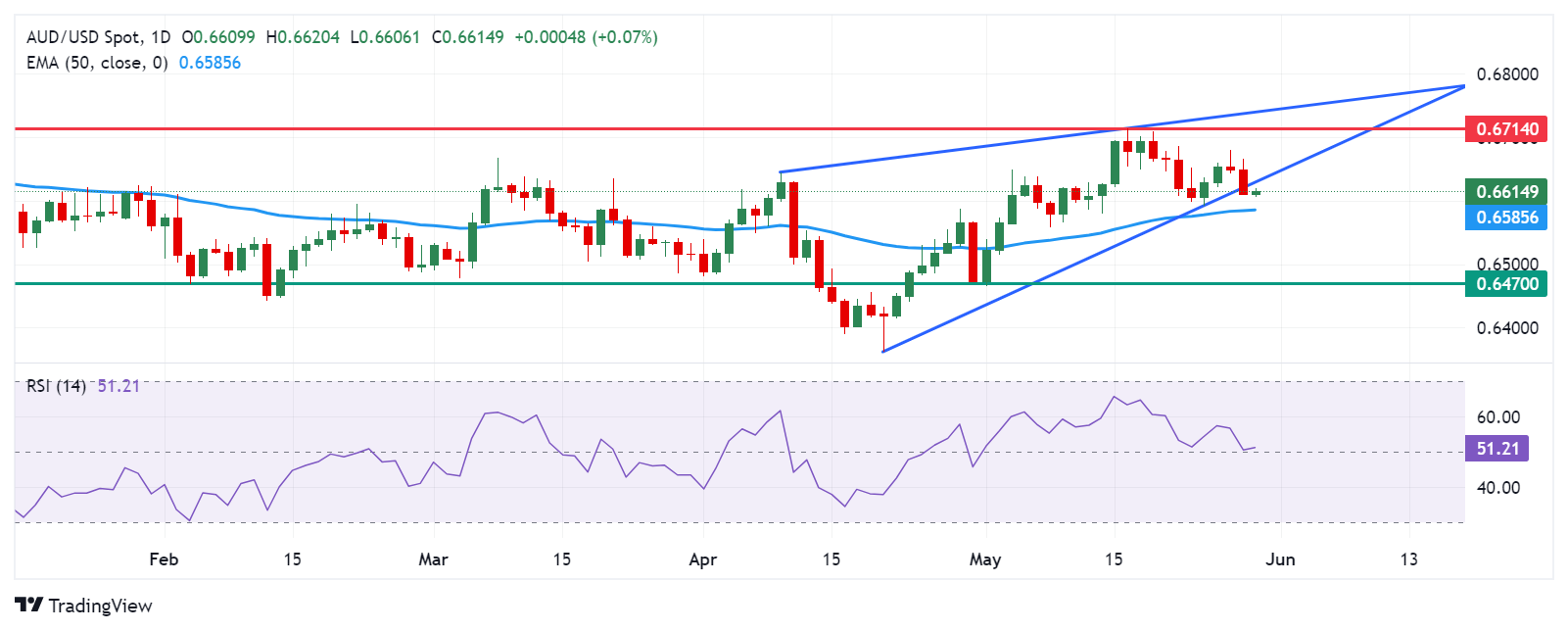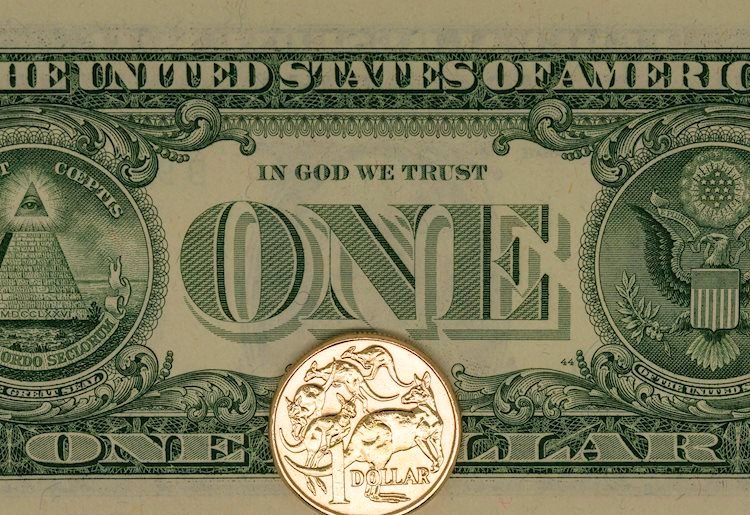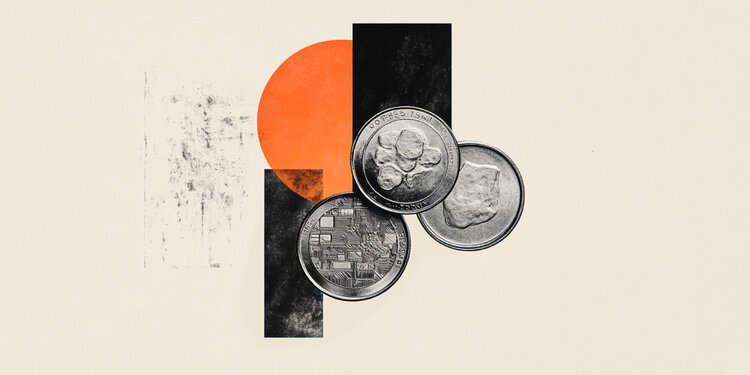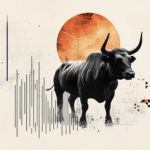- The Australian Dollar loses ground due to investors’ caution ahead of US GDP due on Thursday.
- Australia’s 10-year Government Bond Yield reaches a four-week high of 4.52%.
- The US Dollar remains steady as Treasury yields appreciate due to risk aversion.
The Australian Dollar (AUD) extended its losses, possibly driven by investors adopting a cautious stance ahead of the release of US Gross Domestic Product Annualized (Q1) data on Thursday and the Core Personal Consumption Expenditures (PCE) Price Index figures on Friday. These data events are anticipated to offer insights into the Federal Reserve’s potential stance on interest rate adjustments.
The Australian Dollar may limit its losses due to the increase in the Australian 10-year Government Bond Yield to a four-week high of 4.52%. This shift reflects investor sentiment that the Reserve Bank of Australia (RBA) will maintain higher interest rates for longer. Additionally, the AUD might gain ground as one of its largest trading partners, China, has lifted bans on beef shipments from five major Australian meat producers, per Bloomberg.
Australia’s Monthly Consumer Price Index, released on Wednesday, showed robust figures that could prompt the RBA to consider another rate hike. The minutes from the RBA’s May policy meeting suggested that the central bank had contemplated a potential interest rate increase.
The US Dollar Index (DXY), which measures the USD against six major currencies, trades higher around 105.10, with 2-year and 10-year US Treasury yields at 4.98% and 4.61%, respectively, at the time of reporting. Risk aversion sentiment supports the US Dollar (USD), limiting the advances of the AUD/USD pair.
On Wednesday, the Fed Beige Book report covering April to mid-May showed that national economic activity experienced slight growth, with mixed conditions across industries and districts. The report also indicated that employment rose slightly, wage growth was moderate, and prices increased modestly as consumers resisted further price hikes.
Daily Digest Market Movers: Australian Dollar appreciates as RBA’s Hunter expresses concerns about inflation
- Australia’s Private Capital Expenditure increased by 1.0% in Q1, exceeding expectations for a 0.5% rise and surpassing the previous quarter’s 0.9% increase.
- As per a Bloomberg report, RBA Assistant Governor Sarah Hunter said at a conference in Sydney on Thursday that “inflationary pressures” are the key issue. “We’re very mindful of that.” Hunter also stated that the RBA Board is concerned about inflation remaining above the target range of 1%-3%, suggesting persistent inflationary pressure. Wages growth appears to be near its peak.
- According to Bloomberg, Federal Reserve Bank of Atlanta President Raphael Bostic stated on Wednesday that the path of inflation is expected to be uneven, and a decrease in inflation breadth would bolster confidence in the necessity of a rate cut.
- According to the CME FedWatch Tool, the likelihood of the Federal Reserve implementing a 25 basis-point rate cut in September decreased to 41.7%, down from 49.4% a week earlier.
- Australia’s Monthly Consumer Price Index rose 3.6% year-over-year in April, surpassing the expected reading of 3.4% and the previous reading of 3.5%.
- On Tuesday, Neel Kashkari, President of the Federal Reserve Bank of Minneapolis, suggested that a rate hike might still be possible. Kashkari stated, “I don’t think anybody has taken rate increases off the table,” and expressed uncertainty about the disinflationary process, predicting only two rate cuts, per MSN.
- US Housing Price Index (MoM) for March was underperformed, with March’s number coming in at 0.1% against 1.2% for February, where 0.5% was expected.
- Australia’s Retail Sales (MoM) rose by 0.1% in April, swinging from the previous 0.4% decline. This growth fell short of market expectations of 0.2%.
Technical Analysis: Australian Dollar could test the key level of 0.6600
The Australian Dollar trades around 0.6610 on Thursday. An analysis of the daily chart suggests the weakening of a bullish bias for the AUD/USD pair, as it has broken below the lower boundary of a rising wedge. The 14-day Relative Strength Index (RSI) is positioned at the 51 level, and further decline may confirm the momentum shift.
The AUD/USD pair could potentially move back into the rising wedge to target the four-month high of 0.6714, followed by the upper limit of the rising wedge around 0.6740.
On the downside, the immediate support appears at the psychological level of 0.6600, followed by the 50-day Exponential Moving Average (EMA) at 0.6584. A further decline could exert downward pressure on the AUD/USD pair, potentially driving it toward the throwback support region at 0.6470.
AUD/USD: Daily Chart

Australian Dollar price today
The table below shows the percentage change of the Australian Dollar (AUD) against listed major currencies today. The Australian Dollar was the strongest against the New Zealand Dollar.
| USD | EUR | GBP | CAD | AUD | JPY | NZD | CHF | |
| USD | 0.03% | 0.01% | 0.03% | 0.05% | -0.16% | 0.11% | 0.04% | |
| EUR | -0.04% | -0.02% | 0.00% | 0.00% | -0.19% | 0.07% | -0.01% | |
| GBP | -0.01% | 0.02% | 0.02% | 0.01% | -0.18% | 0.10% | 0.00% | |
| CAD | -0.04% | 0.00% | -0.02% | 0.01% | -0.20% | 0.07% | -0.01% | |
| AUD | -0.05% | 0.00% | -0.02% | -0.01% | -0.21% | 0.09% | -0.03% | |
| JPY | 0.14% | 0.20% | 0.16% | 0.18% | 0.20% | 0.27% | 0.17% | |
| NZD | -0.08% | -0.08% | -0.10% | -0.06% | -0.08% | -0.27% | -0.12% | |
| CHF | -0.03% | 0.01% | -0.01% | 0.02% | 0.02% | -0.18% | 0.08% |
The heat map shows percentage changes of major currencies against each other. The base currency is picked from the left column, while the quote currency is picked from the top row. For example, if you pick the Euro from the left column and move along the horizontal line to the Japanese Yen, the percentage change displayed in the box will represent EUR (base)/JPY (quote).
RBA FAQs
The Reserve Bank of Australia (RBA) sets interest rates and manages monetary policy for Australia. Decisions are made by a board of governors at 11 meetings a year and ad hoc emergency meetings as required. The RBA’s primary mandate is to maintain price stability, which means an inflation rate of 2-3%, but also “..to contribute to the stability of the currency, full employment, and the economic prosperity and welfare of the Australian people.” Its main tool for achieving this is by raising or lowering interest rates. Relatively high interest rates will strengthen the Australian Dollar (AUD) and vice versa. Other RBA tools include quantitative easing and tightening.
While inflation had always traditionally been thought of as a negative factor for currencies since it lowers the value of money in general, the opposite has actually been the case in modern times with the relaxation of cross-border capital controls. Moderately higher inflation now tends to lead central banks to put up their interest rates, which in turn has the effect of attracting more capital inflows from global investors seeking a lucrative place to keep their money. This increases demand for the local currency, which in the case of Australia is the Aussie Dollar.
Macroeconomic data gauges the health of an economy and can have an impact on the value of its currency. Investors prefer to invest their capital in economies that are safe and growing rather than precarious and shrinking. Greater capital inflows increase the aggregate demand and value of the domestic currency. Classic indicators, such as GDP, Manufacturing and Services PMIs, employment, and consumer sentiment surveys can influence AUD. A strong economy may encourage the Reserve Bank of Australia to put up interest rates, also supporting AUD.
Quantitative Easing (QE) is a tool used in extreme situations when lowering interest rates is not enough to restore the flow of credit in the economy. QE is the process by which the Reserve Bank of Australia (RBA) prints Australian Dollars (AUD) for the purpose of buying assets – usually government or corporate bonds – from financial institutions, thereby providing them with much-needed liquidity. QE usually results in a weaker AUD.
Quantitative tightening (QT) is the reverse of QE. It is undertaken after QE when an economic recovery is underway and inflation starts rising. Whilst in QE the Reserve Bank of Australia (RBA) purchases government and corporate bonds from financial institutions to provide them with liquidity, in QT the RBA stops buying more assets, and stops reinvesting the principal maturing on the bonds it already holds. It would be positive (or bullish) for the Australian Dollar.

























